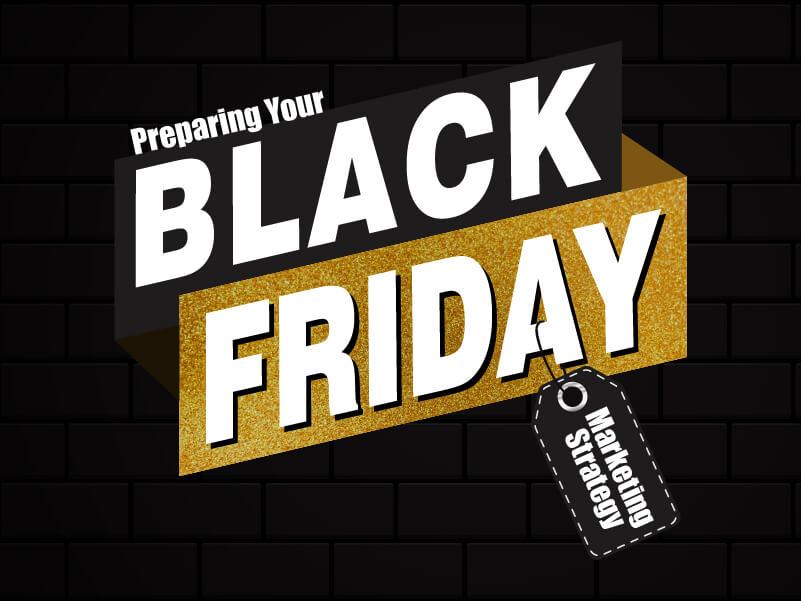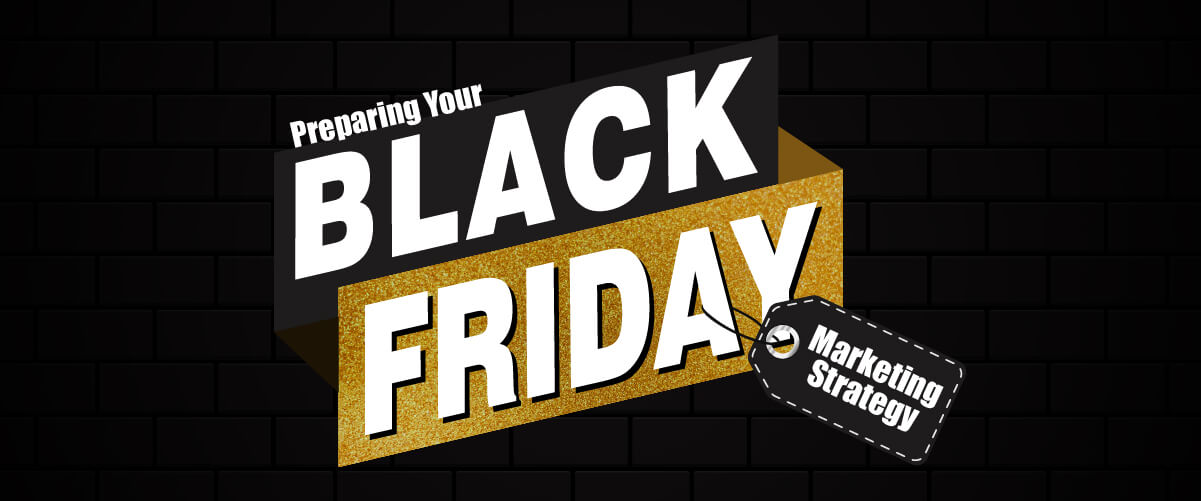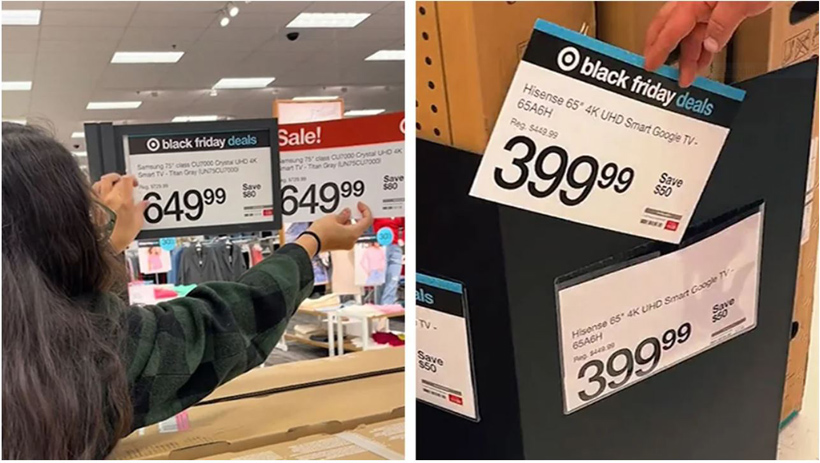It’s almost that time again—when shoppers set their alarms for ungodly hours and leave the Thanksgiving table early to wait in line outside their favorite retail store, or keep their eyes glued to their phones, hoping to get their hands on the best deals of the year.
Black Friday has become a cultural fixture, serving as the official kickoff to the holiday shopping season. But between businesses remaining open on Thanksgiving and sales becoming less exclusive, it’s no secret that Black Friday seems to be packing less of a punch than it used to.
You may be asking yourself if Black Friday even matters anymore.
The answer is yes. Yes it does.
Black Friday sales continue to increase year-over-year, with online sales leading the growth.
In 2023, Black Friday generated $9.8 billion in online sales in the U.S. alone. However, even with the increase in online shopping, Black Friday was still the most popular day for in-store shopping in the United States.
So, even though it may not be the same as it once was, it still holds immense value for small business owners and customers alike.
Preparing for Black Friday is key to having a successful one, but when should you begin preparing, you ask?
Well, that depends on your business and the sales you’re running. Ideally, you should start prepping as early as possible—not only will it give you ample time to get ready, but it will also give you time to spread the word.
But no matter when you start, there are a few key aspects that every Black Friday marketing strategy needs to succeed.
Determine Your Offer
Before you jump in and begin working on this year’s Black Friday sale, take a look at past year’s promotions and evaluate their effectiveness and impact. Ask yourself:
- What worked?
- What didn’t work?
- What have competitors done?
- What items were most popular?
- Are there any similar trends?
All of that information can help you create a strong, enticing offer.
It’s also important to make sure your discounts and offers align with what your customers and target audience want to buy. If you don’t have the season’s most popular products available at a competitive price, it will be hard for you to succeed on Black Friday.
When it comes to offers, there are a few types to consider in addition to the classic percentage discount:
- Minimum Spend Rewards: Spend $100, get $20 off.
- Bundle Offers: Buy three t-shirts for $30 (regular price $12 each).
- Free Gift With Purchase: Free cleaning kit with purchase of any sunglasses.
- Tiered Discounts: 10% off orders over $750, 20% off orders over $100
- Limited-Time Flash Deals: Free shipping and mystery gift on all orders until 1 PM EST.
Pick an offer that’s non-strenuous for you and attractive to your customers.
Oh, and don’t forget to make sure you’ll have enough inventory. 😉
Website and User Experience
With the influx of traffic you may see on Black Friday and throughout Thanksgiving weekend, it’s important that your site can handle it—nothing puts a damper on sales like a slow or malfunctioning website, so make sure that your servers are dependable and ready for the rush.
If you have an eCommerce business, you already understand the importance of having a site that’s both reliable and easy-to-use.
While you shouldn’t redo your entire website for Black Friday, some quick changes can make all the difference. Think of it as putting out some flowers or a candle before guests come over!
Your first step should be general tidying—remove any old promotions, label or remove out-of-stock items, and update any content that needs it.
Website Copy
61% of website users say that if they don’t find what they’re looking for within five seconds, they’ll go to another site. The information on your website matters—and impacts the checkout experience, too.
It’s important to make sure that any and all information about the sale is clearly stated with proper navigation. Whether you have a dedicated page for items on sale or the sale is site-wide, having badges, labels, or stickers with sale information is a great, eye-catching way to inform customers.
Shipping and Return Policies
Now is also the time to check your shipping policy, including options (such as online with in-store pickup), estimated time and costs. Most customers understand that shipping may take a bit longer during large sales, but high, unexpected costs can be a major deterrent—48% of all abandoned carts are due to extra costs, such as shipping and fees, being too high.
By letting customers know about shipping fees ahead of time, shoppers go into their checkout experience prepared.
And speaking of being prepared, make sure your return policy is clear and understandable. If there are specificities to it, now might be the time to add that as a disclaimer to the impacted items, such as “No returns on opened body scrubs.”
If you’re selling online, consider offering free shipping with minimum purchase. 80% of customers are willing to spend more in order to get free shipping. It may not seem like it, but sometimes, spending $20 more to get free shipping is better than spending $7.99 for shipping!
Mobile Priority
Now is also the time to take a look at your mobile user experience.
In 2023, mobile sales made up 60% of all e-commerce sales globally—and more than half of all Black Friday purchases were made on a mobile device.
On a high-traffic day like Black Friday, a shopper’s patience is exceptionally low. They understand that businesses are vying for their dollars tooth and nail, so they’re not going to waste their time with a company that can’t accommodate their shopping preferences right off the bat.
In fact, 67% of mobile users say they’d rather reward a mobile-friendly site by buying a product there than from one of its competitors.
While you may not have time to do a complete redesign before Black Friday arrives, you can still update site content to make it more visually appealing to mobile users. Most modern website builders have straightforward options for creating functional mobile sites—but this doesn’t guarantee a responsive website.
Tip: Most browsers have the option to view a page in different display formats in their inspect or developer tool menu.
Checkout
Aside from simply functioning properly, you need to take a look at the actual shopping and checkout experience on your site. Two major questions to ask are:
- Does your website make it easy for customers to add something to their cart and make a purchase?
- How many steps must shoppers complete before their order is complete?
Complex navigation or cluttered pages make for a poor experience that could turn off visitors from spending their time and money on your site.
Having easy-to-use features and perks like guest checkout, PayPal payment options, and secure account information for return customers can all help to set your eCommerce experience apart from the competition.
If you’re able to, consider offering installment-based payment options, such as Klarna, Afterpay, or PayPal Pay in 4. These options often lead to higher purchases, with businesses that have a Klarna option reporting a 36% increase in purchase frequency.
Organic Outreach
Now that you have your sale locked in and the website to handle it, it’s time to spread the word.
Social Media
Now more than ever, loyal and potential customers alike flock to social media for information. As such, it’s important to ensure your social media profiles all have accurate and up-to-date information—especially before a big day like Black Friday.
Make sure your bios, company information, location, and hours (if applicable) are updated on every platform, including your Google Business Profile.
Now is also a great opportunity to create content that engages, informs, and benefits your audience. Some ideas include:
- Gift guides
- Behind the scenes
- User-generated content
- Reviews
- How-to’s
- Countdowns
- Sneak peeks
This will not only encourage consumers to plan their shopping strategy ahead of time and put your business on their list, but it will also make them feel valued and part of an exclusive customer base.
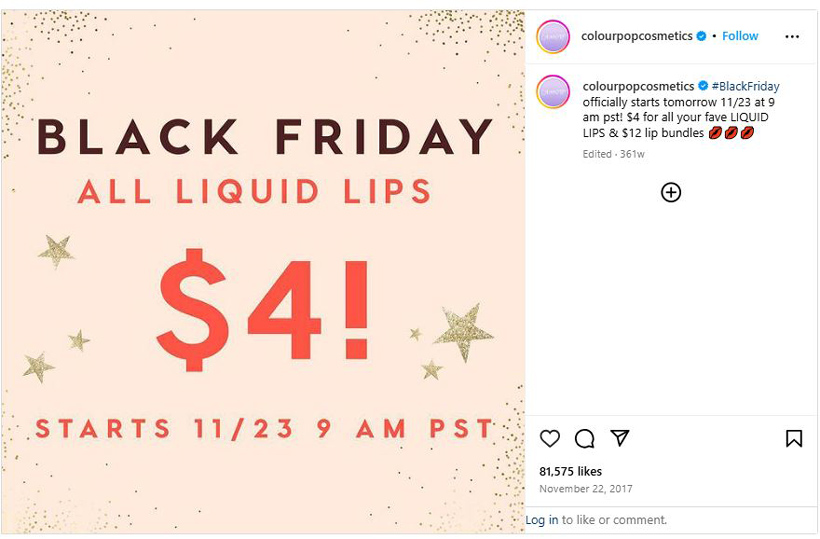
Remember, everything doesn’t need to go on every single platform. Focus on the ones that make sense for your business. And when the time comes, don’t forget to make sure your assets are properly sized for each social media platform!
Email Marketing
Consumers are constantly bombarded with emails from retailers—but if there is one time they are paying close attention to the sales in their inbox, it’s in the days leading up to Black Friday.
But it isn’t enough to just send an email. To really stand out, your emails need to check all the right boxes of being well-designed, scannable, and clear.
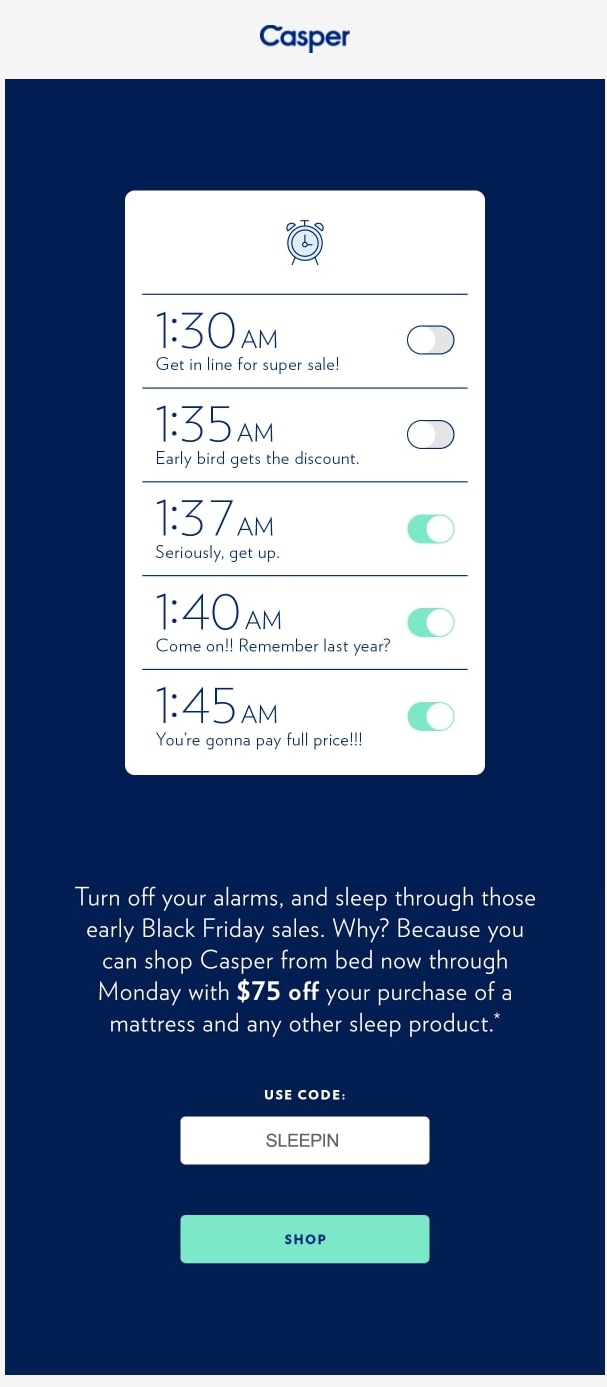
By sending balanced and compelling emails on a consistent basis, you can establish a trusting relationship with your customers, which can help them feel more connected to your company.
Build Your List
If you don’t already have a substantial list of email addresses to leverage, now’s the time to work on building it up. To encourage sign-ups, you can try:
- Adding a pop-up or form to your website
- Letting social media followers know you will be emailing out specials on Black Friday
- Asking customers to provide their email address during the checkout process—both online and in-store
- Offering something in return, such as a discount or exclusive/priority access for upcoming sales
Developing a quality list is a fundamental must in having success with email, and these small, easy methods can help you start or grow your database.
Write Engaging Content
There are plenty of companies whose email marketing message grows stale from overuse. Of course everyone loves buying things at a discount, but sending emails about your 40 percent off sweater sale three times a week is a sure way to get customers to ignore you or unsubscribe.
In general, the best approach is to send a healthy balance of promotional and non-promotional messages all year long. That way, when shoppers do receive promotional messages on days like Black Friday, they’ll actually pay attention.
The weeks leading up to Black Friday are the perfect time to inform, build anticipation, and generate excitement. Let people know your sale ahead of time—but you can still leave some mystery!
For example, “Our self-care product line will be 50% off, and we’ll have gifts with minimum purchases. Make sure you check back on Black Friday for some surprise limited time offers!”
You can also use last year’s data to your advantage. For example, to create a sense of urgency, consider adding information such as “Don’t miss your chance—this sold out in four hours last year!”
If you have the information to do so, sending personalized recommendations is a fantastic way to connect with your customers too. Knowing that there will be a sale on your favorite product is great—receiving an email that says, “Hey, we know you love our body scrub. We wanted to be the first to tell you it’s 50% off on Black Friday,” is even better.
Black Friday itself is your opportunity to announce the sale’s kickoff and fuel urgency with real-time updates—think along the lines of “Now on: our biggest Black Friday sale ever!” or “Act fast: only 2 hours left!”
And after Black Friday is your chance to connect with your audience and express some gratitude—after all, that is the reason for the season! Sending a recap email thanking people and even letting them know of future sales if they missed out on Black Friday is a great way to accomplish this.
Tip: Don’t forget about your email subject line—nearly half of email recipients use the subject line to determine whether or not they should open the email at all!
Design With Your Customer in Mind
Where email marketing proves its worth is when companies find a way to blend promotions, information, and a catchy design.
Just like your website, it’s important that your emails are mobile-friendly. If clickable icons or text are too small to read or interact with on a mobile device, you can say goodbye to potential business from those recipients. Your email design should align with your branding, stand out, and remain accessible.
Most email marketing platforms (such as Mailchimp) have premade layouts and customization options—use these to your advantage! Personalize when and where you can, have a balance of text and photos, and don’t be afraid of white space. Remember, the email should be easily scannable, lest it fall victim to being forgotten with a “Oh, this is a bit long—I’ll read it later.”
Paid Advertising
Whether you’re an eCommerce or brick-and-mortar business, the importance of paid advertising for any type of promotion is undeniable. There are a few different approaches you can take.
Pay-Per-Click Ads
Pay-Per-Click (PPC) campaigns can take many different forms, each with their unique benefit—it’s all about what makes the most sense for your business.
In general, PPC is highly effective for capturing qualified leads and boosting conversions, particularly around high-traffic events such as Black Friday. Under that umbrella, Google Shopping Ads make it easy for potential customers to discover and compare your offerings, and help drive purchase-ready traffic to your website.
Social Media Ads
Social media platforms offer powerful paid advertising options to complement your organic efforts as well. By strategically placing ads in front of your target audience, you can increase brand visibility, foster engagement, and drive traffic to your site. Depending on the platform, you can also have users shop directly from the ad!
Whether you opt for social media ads, PPC ads, or a mix of both, paid advertising can help you build awareness and excitement, all while driving qualified leads directly to your website.
Our Final Black Friday Tips
In the spirit of giving, we have a few final tips to help you knock this Black Friday out of the park.
- Be available: Keep tabs on your social media accounts, email, and any other way customers contact you. Being responsive to any questions or concerns shows you care and can be the difference between making a sale or losing a potential customer.
- Go the extra mile: Pre-write thank you notes to include in bags and packages, include samples or minis, or even coupons for future purchases. The little things make all the difference!
- Keep customers informed: Let customers know of any changes to hours, inventory, or availability. So, if you run out of stock at 8 AM, you should have a social post or email blast ready to go.
- Create a home base: In addition to updating your site, consider building a landing page for Black Friday that has information on the sale, shipping, and FAQS. This page can be linked in emails and posted on social media as a quick way to inform customers.
Are You Ready for Black Friday?
The holiday season can be stressful, but your marketing plan doesn’t have to be. If you can strategize early and put your customers first, you’ll likely win big this Black Friday.
And if you’re new and this is your first Black Friday, don’t worry—your promotional planning WILL get easier with time!

